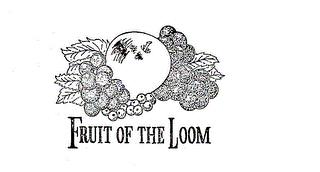We here at Fruit of the Loom are aware of recent claims that have been made regarding our company and our brand. In response to frequently asked questions, here are some helpful facts:
Has a cornucopia ever been part of the Fruit of the Loom® logo?
No. While the presence of the cornucopia has long been part of the Fruit of the Loom® branding lore, and frequently mentioned as an example of the Mandela Effect, a false memory phenomenon whereby different people incorrectly remember the same thing or event, the cornucopia has never been a part of the Fruit of the Loom® logo. Check out recent articles below by Snopes and Medium on the Mandela Effect and the Fruit of the Loom logo.
The Fruit of the Loom Logo Has Never Contained a Cornucopia, Honestly | Snopes.com
Fruit of the Loom conspiracy theory exposes the fragility of memory
If there has never been a cornucopia in the logo, why the claim that Fruit of the Loom is misleading or “gaslighting” consumers?
Fruit of the Loom, in over 170 years of manufacturing, has never used, applied for, or registered a trademark design/logo depicting a cornucopia. A recent post on social media appears to have referenced a cropped picture containing only a small portion of the of a trademark design application, originally applied for in 1973 by Fruit of the Loom, Inc. with the U.S. Patent and Trademark Office (USPTO) for use with laundry detergent.
One of the key components excluded from the cropped image in the social post, was the actual trademark design which was the subject of the application. That trademark design, pictured below, was ultimately registered in 1974, and allowed by Fruit of the Loom to expire in 1988. The full application inclusive of the actual trademark design can be found at the USPTO: https://tsdr.uspto.gov/#caseNumber=73006089&caseSearchType=US_APPLICATION&caseType=DEFAULT&searchType=statusSearch

The only portion of the trademark application shown on the social media post was the Design Code and Description, “05.09.14 Baskets of fruit; Containers of fruit; Cornucopia (horn of plenty).” These generic descriptions were assigned by a USPTO Trademark Examiner (not Fruit of the Loom), to make images more searchable in the total USPTO database that houses all US trademark records. These design codes are a component of any trademark application for a design trademark.
Under trademark law, the trademark owner is only allowed to use the trademark design as submitted with the trademark application. Simply put, Fruit of the Loom submitted and received a registration for the trademark design (picture), and not the design and description code (words). Therefore, the brand could never unilaterally decide to include a depiction of a cornucopia, because it did not exist in the design for which we applied, and for which a federal registration was granted.
What about that neck label picture showing the “Fruit Cluster” design logo over top of a cornucopia?
That is either: 1) the result of some creative photoshopping, or 2) an actual counterfeit apparel item. Fruit of the Loom has not now, nor ever, included a cornucopia in our world-famous Fruit Cluster trademark.
Was Fruit of the Loom responsible for an agricultural crisis that posed severe health risks for residents of Michigan in the 1970s?
No. Velsicol Chemical Company was the corporation responsible for the incident in Michigan. Fruit of the Loom was not associated with the chemical company at that time and had no connection to the incident. In fact, The Detroit Free Press published an article on Jan. 3, 2024, refuting the false allegations made against Fruit of the Loom. Find out more here: Misleading viral video brings back decades-old health crisis (freep.com)
What are the facts surrounding the chemical incident in Michigan?
This January, Fruit of the Loom shared a statement detailing the facts of this incident. In short, the Michigan Chemical Company (part of Velsicol Chemical Company) was responsible for producing polybrominated biphenyl (PBB) and magnesium oxide, which was used as a cattle feed supplement. In 1973, due to a packaging error, PBB entered the cattle feed supply, leading to negative health effects for animals, people, and the environment. It was not until 1986, thirteen (13) years after the crisis, that Farley/Northwest Industries, the corporate conglomerate that owned the Fruit of the Loom® apparel business and had no prior connection to the incident in Michigan, purchased the Velsicol Chemical Company. The following year, in 1987, Farley/Northwest Industries changed its name to “Fruit of the Loom, Inc.”